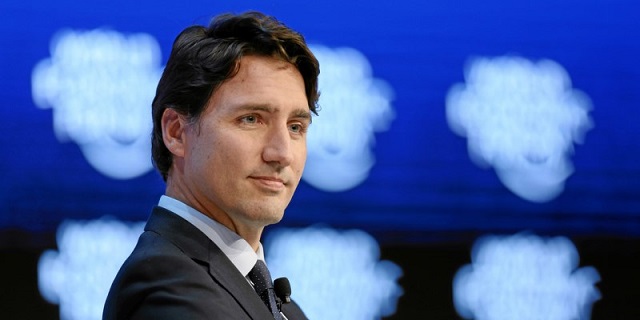Business
Balanced budget within reach—if Ottawa restrains spending

From the Fraser Institute
By Jake Fuss and Grady Munro
This level of debt-financed spending has contributed to an estimated $941.9 billion increase in gross federal debt from 2014/15 to 2023/24. In other words, partly due to its spending habits, nearly one in every two dollars of debt currently held by the federal government has been accumulated under Prime Minister Trudeau.
The Trudeau government will table its next budget on April 16. Federal finances have deteriorated in recent years due to the Trudeau government’s string of budget deficits, and high spending has led to a significant amount of debt accumulation, which imposes costs on current and future generations. Yet if the government presents a plan in Budget 2024 to rein in spending growth, it could balance the budget in two years.
Far from its promise to balance the budget by 2019, the Trudeau government has instead run nine consecutive deficits during its time in office. And it doesn’t intend to stop, with annual deficits exceeding $18 billion planned for the next five years.
The root cause of these deficits is the government’s inability to restrain spending. Since 2014/15, annual program spending (total spending minus debt interest) has increased $193.6 billion—or 75.5 per cent. If we control for population growth and inflation, this represents an extra $2,330 per person.
This level of debt-financed spending has contributed to an estimated $941.9 billion increase in gross federal debt from 2014/15 to 2023/24. In other words, partly due to its spending habits, nearly one in every two dollars of debt currently held by the federal government has been accumulated under Prime Minister Trudeau. Debt accumulation will only continue barring a change in course, as the federal government is expected to add another $476.9 billion in gross debt over the next five years.
Simply put, the Trudeau government’s approach towards federal finances has been characterized by high spending, large deficits and significant debt accumulation.
This approach to fiscal policy is concerning. Growing government debt leads to higher debt interest costs, all else equal, which eat up taxpayer dollars that could otherwise have provided services or tax relief for Canadians. And these costs are not trivial. For example, in 2023/24 the federal government is expected to spend more to service its debt ($46.5 billion) than on child-care benefits ($31.2 billion).
Accumulating debt today also increases the tax burden on future generations of Canadians—who are ultimately responsible for paying off this debt. Research suggests this effect could be disproportionate, with future generations needing to pay back a dollar borrowed today with more than one dollar in future taxes.
Although the Trudeau government promises more of the same for the coming years, this need not be the case. Instead, a recent study shows the federal government could balance the budget in two years if it slows spending growth starting in 2024/25. The following figures highlight this approach. The first chart below displays currently planned federal program spending from 2023/24 to 2026/27, compared with the spending path that will balance the budget, while the second chart shows the resulting budgetary balances.
As shown by the first chart, to balance the budget by 2026/27 the federal government must limit annual spending growth to 0.3 per cent for two years. As a result, annual nominal program spending would rise from $469.4 billion in 2024/25 to $472.3 billion in 2026/27. For comparison, the Trudeau government currently plans to increase annual spending up to $499.4 billion during that same period.
Should the government implement this level of spending restraint, the federal deficit would shrink to $21.8 billion in 2025/26 (as opposed to $38.3 billion), and the budget would be balanced by 2026/27 (as opposed to a $27.1 billion deficit). All told, by slowing spending growth to balance the budget, the federal government would avoid accumulating significant debt. Moreover, this also sets the government up to return to budget surpluses in the following years, which could be used to start chipping away at the mountain of federal debt already on the books.
Rather than continue its current approach to fiscal policy, and risk needing to employ more drastic cuts in the future, the Trudeau government should implement modest spending restraint now and balance the budget.
Authors:
Business
Resurfaced Video Shows How Somali Scammers Used Day Care Centers To Scam State


From the Daily Caller News Foundation
A resurfaced 2018 video from a Minneapolis-area TV station shows how Somali scammers allegedly bilked Minnesota out of millions of dollars for services that they never provided.
Independent journalist Nick Shirley touched off a storm on social media Friday after he posted a photo of one day-care center, which displayed a banner calling it “The Greater Learing Center” on X, along with a 42-minute video that went viral showing him visiting that and other day-care centers. The surveillance video, which aired on Fox 9 in 2018 after being taken in 2015, showed parents taking kids into the center, then leaving with them minutes later, according to Fox News.
“They were billing too much, they went up to high,” Hennepin County attorney Mike Freeman told Fox 9 in 2018. “It’s hard to imagine they were serving that many people. Frankly if you’re going to cheat, cheat little, because if you cheat big, you’re going to get caught.”
Dear Readers:
As a nonprofit, we are dependent on the generosity of our readers.
Please consider making a small donation of any amount here.
Thank you!
Democratic Gov. Tim Walz of Minnesota was accused of engaging in “systemic” retaliation against whistleblowers in a Nov. 30 statement by state employees. Assistant United States Attorney Joe Thompson announced on Dec. 18 that the amount of suspected fraud in Minnesota’s Medicaid program had reached over $9 billion.
After Shirley’s video went viral, FBI Director Kash Patel announced the agency was already sending additional resources in a Sunday post on X, citing the case surrounding Feeding Our Future, which at one point accused the Minnesota government of racism during litigation over the suspension of funds after earlier allegations of fraud.
KSTP reported that the Quality Learning Center, one of the centers visited by Shirley, had 95 citations for violations from one Minnesota agency between 2019 to 2023.
President Donald Trump announced in a Nov. 21 post on Truth Social that he would end “Temporary Protected Status” for Somalis in the state in response to allegations of welfare fraud and said that the influx of refugees had “destroyed our country.”
Business
Disclosures reveal Minnesota politician’s husband’s companies surged thousands-fold amid Somali fraud crisis

Rep. Ilhan Omar’s latest financial disclosures reveal seemingly sudden wealth accumulation inside her household, even as Minnesota grapples with revelations of massive fraud that may have siphoned more than $9 billion from government programs. The numbers, drawn from publicly filed congressional reports, show two companies tied to Omar’s husband, Tim Mynett, surging in value at a pace that raises more questions than answers.
According to the filings, Rose Lake Capital LLC — a business advisory firm Mynett co-founded in 2022 — jumped from an assessed range of $1 to $1,000 in 2023 to between $5 million and $25 million in 2024. Even using the most conservative assumptions allowed under Congress’ broad valuation ranges, the company’s value would have increased thousands of times in a single year. The firm advertises itself as a facilitator of “deal-making, mergers and acquisitions, banking, politics and diplomacy.”
Archived versions of Rose Lake’s website once showcased an eye-catching lineup of political heavyweights: former Ambassador to Bahrain Adam Ereli, former Sen. Max Baucus, and prominent Democratic National Committee alumni William Derrough and Alex Hoffman. But as scrutiny surrounding Omar intensifies — particularly over whether her political network intersected with sprawling fraud schemes exposed in Minnesota — the company has quietly scrubbed its online footprint. Names and biographies of team members have vanished, and the firm has not clarified whether these figures remain involved. Omar’s office offered no comment when asked to explain the company’s sudden growth or the removal of its personnel listings.
Mynett, Omar’s third husband, has long been a controversial presence in her political orbit, but the dramatic swell in his business holdings comes at a moment when trust in Minnesota’s oversight systems is already badly shaken. Federal and state investigators now estimate that fraud involving pandemic-era and nonprofit programs may exceed $9 billion, a staggering figure for a state often held up as a model of progressive governance. For many residents, the revelation that Omar’s household wealth soared during the same period only deepens skepticism about who benefited from Minnesota’s expansive social-spending apparatus.
The financial story doesn’t stop with Rose Lake. A second Mynett-linked entity, ESTCRU LLC — a boutique winery registered in Santa Rosa, California — reported an assessed value of $1 million to $5 million in 2024. Just a year earlier, Omar disclosed its worth at $15,000 to $50,000. Despite the dramatic valuation spike, ESTCRU’s online storefront does not appear to function, its last social media activity dates back to early 2023, and the phone number listed on its website is no longer in service. As with Rose Lake, Omar’s office declined to comment on the winery’s sudden rise in reported value.
The House clerk has yet to release 2025 disclosures, leaving unanswered how these companies are performing today — and how such explosive growth materialized in the first place.
-

 Business12 hours ago
Business12 hours agoICYMI: Largest fraud in US history? Independent Journalist visits numerous daycare centres with no children, revealing massive scam
-

 Daily Caller2 days ago
Daily Caller2 days agoWhile Western Nations Cling to Energy Transition, Pragmatic Nations Produce Energy and Wealth
-

 Daily Caller2 days ago
Daily Caller2 days agoUS Halts Construction of Five Offshore Wind Projects Due To National Security
-

 Alberta2 days ago
Alberta2 days agoAlberta Next Panel calls for less Ottawa—and it could pay off
-

 Bruce Dowbiggin2 days ago
Bruce Dowbiggin2 days agoBe Careful What You Wish For In 2026: Mark Carney With A Majority
-

 Business2 days ago
Business2 days agoMainstream media missing in action as YouTuber blows lid off massive taxpayer fraud
-

 Business2 days ago
Business2 days agoLand use will be British Columbia’s biggest issue in 2026
-

 Energy2 days ago
Energy2 days agoRulings could affect energy prices everywhere: Climate activists v. the energy industry in 2026








